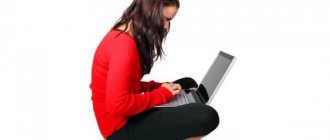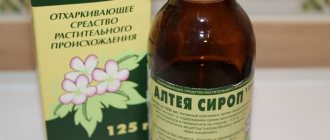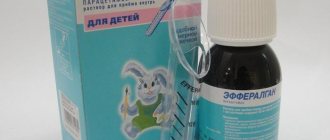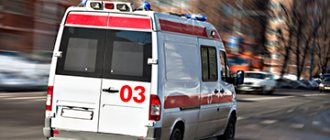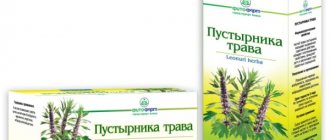Phenibut for children: detailed instructions for using the medicine
Phenibut is classified as a nootropic drug that stimulates brain functionality and improves the general state of the psyche. The medication has a mild anxiolytic effect, it eliminates fear and anxiety, asthenia, and restores sleep. Parents are concerned about the age at which the medicine can be used and what effect it has on the child.
Cool
Send
Release form
The drug is produced by several Russian, Latvian and Belarusian pharmaceutical companies only in tablet form. They are small in diameter, round, and white or yellowish in color. There is a mark on the front side that allows you to divide the tablet in half. The medicine is sold in blisters containing 10 tablets. Medicine packages have several such plates.
Compound
The active ingredient in phenibut that provides the therapeutic effect is called aminophenylbutyric acid.
This substance is contained in tablets in the form of hydrochloride, and the dosage of acid is 250 mg in each (half contains only 125 mg). Additional components vary from manufacturer to manufacturer.
They are represented by milk sugar, calcium stearate, potato starch, microcrystalline cellulose, and other components.
The therapeutic mechanism of action of the drug is based on the following properties:
- relaxation of vascular walls;
- elimination of nervous excitement in the child;
- acceleration of therapy for stuttering, speech disorders, general development;
- increased mental functionality;
- anticonvulsant effect;
- beneficial effects on brain functioning;
- normalization of attention and memory development;
- improvement of cerebral blood supply;
- absence of negative effects of stress on the child’s body;
- calming effect;
- elimination of insomnia, restoration of natural night sleep.
Indications
Regarding the medication Phenibut, instructions for use for children indicate a wide range of uses:
- fast fatiguability;
- stuttering;
- chronic fatigue;
- anxiety and obsessive states;
- neuroses;
- feeling of fear;
- psychopathy;
- nervous tics;
- sudden mood swings;
- convulsions;
- tendency to motion sickness in transport;
- urination and sleep disorders;
- dizziness.
A pediatrician recommends phenibut to a child when an anxious situation develops around him and there are preconditions for stress. The medication makes it easier to wait for the planned operation; it softens the adaptation period at the time of parental divorce, before entering school or kindergarten.
At what age is it allowed to take it?
The instructions for the drug Phenibut for children state that this drug is not recommended for use in treating children under three years of age. Some manufacturers note in the annotation contraindications until the child reaches 8 years of age, since it is then that a dosage of a whole tablet is already allowed.
In practice, pediatric neurologists prescribe this medication to younger children, although this happens extremely rarely before reaching the age of two. Doctors try to prevent the harmful effects of the medicine on the still immature infant nervous system.
Contraindications
Contraindications to the use of this medicine include:
- ulcerative pathology of the gastrointestinal tract;
- kidney or liver dysfunction;
- children under 2 years of age;
- individual intolerance to any ingredient of the medication.
During medication therapy, the following unwanted side effects sometimes occur, which worsen with an overdose:
- headache;
- drowsiness or insomnia;
- nausea or vomiting;
- irritability;
- the appearance of an allergic rash simultaneously with itching of the epidermis.
Side effects
When there are contraindications, the use of the medicine provokes the development of side effects:
- headache in the very first days of using the medication;
- drowsiness;
- nausea accompanied by vomiting attacks;
- increased nervousness;
- anxiety;
- emotional arousal;
- the appearance of a skin rash accompanied by severe itching.
As soon as the described signs appear, immediately stop taking the medication and immediately visit your pediatrician.
Dosage
Regarding the medicine phenibut dosage for children provides the following recommendations.
Important! The presented doses are for informational purposes only! Only a pediatrician has the right to prescribe a drug treatment regimen.
The instructions prohibit the use of tablets by children exceeding these values, at the appropriate age of the child:
- 2–8 years – 50–100 mg three times a day;
- 9–14 years – 250 mg three times a day;
- after 15 years – 250–500 mg three times a day.
The exact dosage is prescribed by the doctor. Although it will differ from the scheme described above, the daily intake cannot exceed the following indicators:
- up to 8 years – 150 mg;
- up to 14 years – 300 mg;
- from 15 years – 750 mg.
Cases of effective use of medicine for infants in a small dose have been described.
Overdose
Exceeding the dosage may cause negative consequences:
- fatty hepatosis;
- nausea;
- lethargy;
- vomiting attacks.
There is a high probability of kidney dysfunction, hypotension, and increased presence of eosinophils in the blood. To relieve signs of overdose, the pediatrician prescribes gastric lavage and then taking enterosorbents. Symptomatic treatment is performed to restore the activity of important organs.
Interaction with other drugs
Phenibut can enhance the effect of sleeping pills, anti-epileptic drugs, antipsychotics and narcotic analgesics. When the medication is used with such drugs, it is necessary to reduce their dosage. It is necessary to simultaneously monitor the child's condition when the child, in addition to Phenibut, is prescribed medications that can negatively affect the liver and circulatory system.
special instructions
The drug is allowed to be used without being tied to meals. The tablet is placed in the mouth, then chewed with water. It is recommended to grind it into powder, add it to any drink, and then give it to the baby to drink.
When a child does not want to take the medicine on his own, it is recommended to add it to foods or drinks. It is only undesirable to mix the drug with too large portions, since children often do not finish everything from the plate. Therapy lasts a month and a half. If further treatment is necessary, a three-week break should be taken.
The medicine helps fight motion sickness of a child in transport, since it blocks vomiting receptors. It is recommended to take a tablet of the drug an hour before the trip, although you can also take it while driving.
Long-term use of the drug provokes the risk of a decrease in its effectiveness due to addiction. You cannot stop taking it abruptly. Dosages should be reduced gradually to avoid causing sudden irritability.
Special instructions include the following:
- It is forbidden to take phenibut simultaneously with tranquilizers;
- it is allowed to combine the medicine with psychotropic drugs, but the treatment course must be drawn up only by a qualified pediatrician;
- the concentration of the active components of the drug in powder form exceeds the same values when taking tablets;
- The simultaneous use of medication and sleeping pills, antipsychotics or anticonvulsants is strictly prohibited;
- if it is necessary to carry out long-term therapy, it is recommended to conduct regular examinations of the liver;
- It is necessary to use the medicine with caution if it is necessary to combine it simultaneously with medications that have a toxic effect.
Terms of sale
To purchase Phenibut at a pharmacy, you must first visit the clinic with your child, since this medicine is sold only by prescription. The cost of the drug depends on the number of blisters in the package, as well as the manufacturer. 20 domestically produced tablets cost 100–120 rubles, but Latvian medicine will cost more – about 400 rubles.
Storage conditions
The tablets should be stored at home in a dry place so that the medicine is not affected by elevated temperatures. The place of detention should be hidden from access by small children. The tablets remain valid for 3 years after release, the date of which is indicated on the blister and on the packaging.
Reviews
When considering reviews from neurologists about the use of Phenibut for children, it is necessary to note positive statements, since the drug:
- rarely has side effects;
- effective, low toxicity;
- has a small list of contraindications.
When purchasing a medicine such as Phenibut, reviews for children are a priority for parents. After all, you can find many negative statements about the drug.
Victoria, 22 years old, St. Petersburg: Phenibut was prescribed to my two-month-old baby because he practically did not sleep. After taking the pills, the child lost sleep altogether, so he had to stop using it.
Veronika Nikolaevna, 43 years old , kindergarten teacher for children with complex developmental defects, Moscow: pediatricians often prescribe phenibut to my patients.
But personally, I don’t like the drug, because after taking it, babies become irritable and too whiny. They find it difficult to sleep and experience mood swings.
Therefore, parents often stop using this medicine.
Pediatric medicine specialists are confident that the negative effect is caused by the incorrect dosage of the prescribed medication. It is difficult to immediately determine how much a substance should be given to a child. Because of this, side effects appear.
Source: https://xreed.ru/nootropy/fenibut-dlya-detej
Indications for use
Phenibut should be taken at the age of 7 years if the following problems are present:
- children get tired quickly and experience chronic fatigue;
- the child suffers from obsessive disorders, he has a constant feeling of fear and anxiety;
- the child suffers from a phobia;
- the child has developed a nervous tic or stutters;
- for the treatment of diagnosed neuroses;
- when taking antiepileptic drugs (Phenibut enhances their effect);
- for violations of speech and motor abilities;
- for problems with sleep;
- if the child experiences sudden mood swings;
- with enuresis or urinary retention.
At the age of 7, stress for a child is dangerous for the development of mental disorders . Therefore, Phenibut is often prescribed as a prophylactic drug to prevent the consequences of stressful situations. For example, this may be a planned operation if the child is experiencing such treatment for the first time.
At the age of seven, you can take Phenibut even if children are prone to motion sickness. This syndrome develops between the ages of 2 and 12 years. Therefore, before a long trip in a car or a trip on a ship, neurologists recommend taking a pill an hour before leaving.
Phenibut is a drug for improving memory and increasing performance
Sleep disorder, anxiety, increased anxiety, irritability, emotional instability, high fatigue - familiar phrases for a modern person who often faces psycho-emotional stress and stress.
When these and similar conditions affect the quality of life, the attending physician may prescribe Phenibut, a nootropic medicine that improves cognitive abilities and has a mild tranquilizing effect.
This combination allows you to simultaneously maintain performance and eliminate anxiety.
Figure 1 – Phenibut is good for people who often experience anxiety and restlessness
Phenibut can also be used once to prevent motion sickness and for the purpose of premedication for anesthesia.
The active ingredient of the drug, aminophenylbutyric acid, is a derivative of phenylethylamine and gamma-aminobutyric acid (GABA). Moreover, GABA is an organic compound, a brain metabolite, that is, a substance that is used by the structures of the central nervous system to ensure metabolism and maintain the effective functioning of brain cells.
Side effects
In most cases, Phenibut is well tolerated, but like any medicine it can cause the following side effects:
- drowsiness;
- nausea;
- headache (only at the first appointments);
- increased irritability;
- excitation;
- anxiety;
- dizziness;
- allergic reactions (rash and itchy skin).
How to take Phenibut
Phenibut is prescribed in therapeutic courses lasting from 2-3 to 4-6 weeks, depending on the disease and the speed of normalization of the condition. Therapy can be repeated after 2-4 weeks.
This time interval is necessary so as not to cause addiction to the drug, which supplies the brain with the necessary metabolites, and it (the brain) stops producing these substances on its own in the required quantities.
Phenibut is started at full therapeutic dosage. But they stop the course of treatment gradually, reducing the dosage over 1-2 weeks.
With long-term use of Phenibut, it is recommended to take a general blood test once a week to identify possible eosinophilia and a blood test for the activity of AST and ALT.
When using Phenibut with other psychotropic drugs, it is necessary to reduce the dosage of both medications taken.
If a person gets motion sickness in transport, then Phenibut should be taken 20-30 minutes before the trip in a single dose of 250-500 mg (1-2 tablets). Only in this case will it be effective.
Figure 3 – Take Phenibut tablets with enough water
Phenibut should only be taken after meals, as severe irritation of the stomach lining may occur. The tablet must be swallowed whole, without biting or chewing, or crushing in any other way. The tablets should be taken with plenty of water.
Standard dosage of Phenibut for adults: 250 – 500 mg (1-2 tablets) 3 times a day. If necessary, the dosage is increased to 750 mg (3 tablets) 3 times a day.
For children under 8 years of age, Phenibut is prescribed 20–150 mg 3 times/day, and for children aged 8–14 years—250 mg 3 times/day.
The maximum permissible dosage of Phenibut is: 750 mg (3 tablets) for adults, 500 mg (2 tablets) for elderly people over 65 years of age, 300 mg for children 8 – 14 years of age and 150 mg for children under 8 years of age.
The duration of use of Phenibut is determined by the attending physician.
How to take Phenibut for children
Phenibut has proven to be a drug with low toxicity and good tolerability, so it is prescribed for the treatment of neurotic and anxiety disorders in children and the elderly.
Phenibut for children (from 8 years old) is used in a dosage of 20 – 100 mg/day for a course of 2-4 weeks. This duration of therapy is associated with the child’s possible psychological adaptation to the medicine.
The drug is prescribed to young children (less than 8 years old) by a doctor in exceptional cases. Only the doctor can decide on this.
Phenibut is not recommended for infants, since the medication can have multidirectional effects on the child, which cannot be predicted in advance. Doctors advise refraining from using Phenibut for at least two years.
Figure 4 - Children aged 8 to 14 years should take no more than 250 mg per day
Also, if necessary, it is better to give the powder, which is prepared by a pharmacist in a pharmacy, since dividing Phenibut 250 or 100 mg into correct, “children’s” doses is difficult.
| " Back 29.09.2019 19:52 Neurologist Mikhail Viktorovich Teleshov The drug Phenibut is often prescribed to children by pediatric neurologists to eliminate neurological and mental disorders, sleep disorders, and hyperactivity. However, many parents are afraid to give their child such medicine. So is this remedy suitable for treating children? Is it safe for the body? We will talk about this in more detail in this article. What it is?Phenibut is a nootropic drug designed to improve the functional state of the brain. It is taken as a psychostimulant and antioxidant. The drug is a round tablet with a yellowish or white tint. One capsule contains 250 milligrams of the active substance - aminophenylbutyric acid, also known as phenibut hydrochloride. In addition to the main component, there are also auxiliary enzymes:
The tablets can be divided - there is a special mark. The dose of medication taken depends on the age of the child. There are two age categories: from three to eight years old and from eight to fourteen years old. Thus, a child at 4 years old and at 7 years old receives the same dose of medication. Phenibut for children is sold in packs of 10, 20, 30, 40, 50 or 100 pieces. It is recommended to select packaging based on the duration of treatment. Note! In our pharmacy the price of Phenibut starts from 1090 rubles. ActionPhenibut increases brain activity as well as mental performance. After taking the drug, children’s feelings of anxiety and fear disappear, memory improves, and concentration increases. Pediatricians often note the fact that children’s speech defects, stuttering, and tics disappear. Among other things, Phenibut for children has a hypnotic property, due to which the child’s sleep is normalized, nightmares and insomnia disappear. Generally speaking, after taking a course of Phenibut, children experience:
What is it prescribed for?Phenibut for children is used to treat children aged 2 years, 3 years or 5 years in the following cases:
Instructions for useAccording to the instructions, Phenibut is taken in a course lasting two to three weeks. However, sometimes therapy can last up to six weeks. In some cases, re-treatment is carried out after a break of two to four weeks. Please note that if you take the drug for a long time, you must undergo a general and biochemical blood test weekly. This is necessary to prevent eosinophilia. How to give correctly?Directions for use: orally after meals with a small amount of water. It is not recommended to crush or chew the tablet. When treating children, Phenibut should be started immediately in full dosage - that is, there is no need to gradually increase the dose of the medication taken. However, you should not stop taking it suddenly, as discomfort may occur and the previous symptoms may return. How to stop Phenibut for a child? It is necessary to reduce the given doses daily, combining the drug with sedatives. conclusionsThus, this drug can be used to treat children from three years of age. The drug is absolutely harmless to a growing organism. However, do not forget that only a doctor can prescribe and cancel treatment. Consult a neurologist before starting to take the medicine. Where to buy without a prescription?You can buy Phenibut without a prescription on our website. This drug belongs to sports nutrition and does not require a doctor’s prescription. Sources
| |
| Age | Dose size per day |
| Less than 8 years | From 20 to 150 mg |
| 8-14 years | No more than 250 mg |
| Over 14 years old | Standard adult doses possible |
Phenibut during pregnancy and lactation
As for taking Phenibut during pregnancy and breastfeeding, doctors come to a consensus - the drug is strictly prohibited in the first trimester, since the development of all major organs and systems occurs in the fetus.
There have been no clinically reliable studies on exactly how GABA derivatives affect the unborn baby. It is also unknown whether the active ingredient passes into breast milk.
Therefore, if Phenibut is indicated for use, it is recommended to switch to artificial feeding.
As for later stages of pregnancy, experts allow use with caution when the likely benefit to the mother significantly outweighs the possible risk to the fetus.
Interaction
The interaction of Phenibut with other medications is limited to joint use with any other tranquilizers, antipsychotics, sleeping pills, narcotic (opiates) and anticonvulsants, as the effects of both drugs are enhanced. In this case, it is necessary to reduce the dosage of both Phenibut and medications belonging to one of the listed groups. Also, it is necessary to take with caution drugs that have a toxic effect on the liver and blood system.
Phenibut and alcohol
As follows from the instructions, Phenibut is used in the complex treatment of alcohol withdrawal syndrome to relieve anxiety, restlessness and other unpleasant psychological experiences and symptoms. But this does not mean that simultaneous use of the drug and alcoholic beverages is possible.
The fact is that it is impossible to predict the body’s reaction to such a combination. Phenibut in combination with alcohol can cause rapid and severe intoxication or, on the contrary, help not to get drunk and maintain clarity of mind.
Analogs
Figure 5 – Analogues of the nootropic Phenibut
Currently, synonyms (containing the same active ingredient) and analogues of Phenibut are presented on the pharmaceutical market. Synonyms are drugs containing exactly the same active substance as Phenibut. Analogues are drugs with the most similar therapeutic effect, but containing other active ingredients. The following drugs are synonyms for Phenibut:
- Anvifen;
- Quatrex;
- Noobut;
- Noofen.
Medicines with the most similar therapeutic effect, but containing other active substances are (analogs):
It is important to remember that analogues of therapeutic effect are prescribed for similar clinical indications, but have their own adverse reactions and dosages. Specialist consultation required!
: Anxiety disorder and Phenibut
Source: https://uteka.ru/articles/lekarstvennye-preparaty/fenibut/
Phenibut - official instructions for use, analogues, price, availability in pharmacies
Round, flat-cylindrical tablets with a chamfer and a score, white or yellowish-white in color.
Pharmacotherapeutic group:
Other psychostimulants and nootropics.
Pharmacological properties
Pharmacodynamics The active substance aminophenylbutyric acid hydrochloride is a derivative of gamma-aminobutyric acid (GABA) and phenylethylamine.
It has tranquilizing properties, stimulates memory and learning, increases physical performance, eliminates psycho-emotional tension, anxiety, fear and improves sleep. Does not affect cholinergic and adrenergic receptors.
Extends the latent period and shortens the duration and severity of nystagmus.
Noticeably reduces the manifestation of asthenia and vasovegetative symptoms, including headache, a feeling of heaviness in the head, sleep disturbance, irritability, emotional lability, increases mental performance, improves well-being, increases interest and initiative, motivation for vigorous activity without sedation or agitation.
Unlike tranquilizers, under the influence of aminophenylbutyric acid, psychological indicators (attention, memory, speed and accuracy of sensory-motor reactions) improve. The formation of addiction and dependence on the drug, or “withdrawal” syndrome, was not noted.
Pharmacokinetics: After oral administration, it is well absorbed and penetrates into all tissues of the body.
About 0.1% of aminophenylbutyric acid from the taken dose of the drug penetrates into the brain tissue; in young and elderly patients, increased penetration through the blood-brain barrier is possible.
After 3 hours, aminophenylbutyric acid is detected in the urine, at the same time the concentration in the brain tissue does not decrease; it is detected in the brain after another 6 hours.
80-95% of the drug is metabolized in the liver to pharmacologically inactive metabolites. 5% is excreted unchanged from the body by the kidneys.
The day after taking the drug, aminophenylbutyric acid can only be detected in the urine; it is determined in urine two days after administration, but the detectable amount is 5% of the administered dose.
The greatest binding of aminophenylbutyric acid occurs in the liver (80%). When taken repeatedly, the drug does not accumulate in the body.
Indications for use
- asthenic and anxiety-neurotic conditions;
- stuttering, tics and enuresis in children;
- insomnia and night anxiety in the elderly;
- Meniere's disease, dizziness associated with dysfunctions of the vestibular analyzer of various origins;
- prevention of motion sickness during kinetosis;
- as part of complex therapy for alcohol withdrawal syndrome, for the relief of psychopathological and somatovegetative disorders.
Carefully
Patients with erosive and ulcerative diseases of the gastrointestinal tract are recommended to prescribe smaller doses of the drug due to the irritating effect of the drug.
Use during pregnancy and breastfeeding
Use during pregnancy and breastfeeding is not recommended, since there are not enough clinical observations.
Experimental studies on animals did not establish mutagenic, teratogenic or embryotoxic effects of the drug.
Directions for use and doses
Orally after meals with water. You can't chew it.
Asthenic and anxiety-neurotic conditions Adults: 250-500 mg (in terms of the required number of tablets) 3 times a day.
Highest single doses: for adults – 750 mg (in terms of the required number of tablets), for patients over 60 years of age – 500 mg (in terms of the required number of tablets).
If necessary, the daily dose is increased to 2500 mg (in terms of the required number of tablets). The course of treatment is 4-6 weeks.
Children: from 3 to 8 years – 125 mg (in terms of the required number of tablets) 2-3 times a day; from 8 to 14 years – 250 mg (in terms of the required number of tablets) 2-3 times a day; children over 14 years of age - adult doses.
Stuttering, tics and enuresis in children Children: from 3 to 8 years – 125 mg (in terms of the required number of tablets) 2-3 times a day; from 8 to 14 years – 250 mg (in terms of the required number of tablets) 2-3 times a day; children over 14 years of age - adult doses.
Insomnia and night anxiety in the elderly 250-500 mg (in terms of the required number of tablets) 3 times a day.
To eliminate dizziness due to dysfunction of the vestibular analyzer of infectious origin (otogenic labyrinth) and Meniere's disease. During an exacerbation, 750 mg (in terms of the required number of tablets) is prescribed 3 times a day for 5-7 days, with a decrease in the severity of vestibular disorders - 250- 500 mg (in terms of the required number of tablets) 3 times a day for 5-7 days, then 250 mg (in terms of the required number of tablets) 1 time per day for 5 days.
For relatively mild diseases - 250 mg (in terms of the required number of tablets) 2 times a day for 5-7 days, then 250 mg (in terms of the required number of tablets) 1 time per day for 7-10 days .
To eliminate dizziness due to dysfunction of the vestibular analyzer of vascular and traumatic origin, Prescribe 250 mg (in terms of the required number of tablets) 3 times a day for 12 days.
To prevent motion sickness during kinetosis, 250-500 mg (in terms of the required number of tablets) once one hour before the intended trip or when the first symptoms of motion sickness appear.
The anti-sickness effect of aminophenylbutyric acid increases with increasing dosage of the drug.
When severe symptoms of motion sickness occur (“uncontrollable” vomiting and others), taking aminophenylbutyric acid orally is ineffective even at a dose of 750-1000 mg (in terms of the required number of tablets).
As part of complex therapy for alcohol withdrawal syndrome in order to relieve psychopathological and somatovegetative disorders. In the first days of treatment, 250-500 mg (in terms of the required number of tablets) are prescribed 3 times a day during the day and 750 mg (in terms of the required number of tablets ) at night with a gradual decrease in the daily dose to the usual for adults. Never take a double dose to replace a missed dose!
Patients with renal and/or liver failure during long-term use should monitor renal and/or liver function indicators.
If liver function is impaired, high doses of the drug can cause hepatotoxicity. Patients are prescribed less effective doses.
Side effect
Aminophenylbutyric acid, like other drugs, can cause side effects that may not affect all patients. In general, the drug is generally well tolerated.
Nervous system disorders: frequency unknown: drowsiness and increased symptoms (at the beginning of treatment), dizziness, headache.
Gastrointestinal disorders: frequency unknown: nausea (at the beginning of treatment).
Disorders of the skin and subcutaneous tissues: rarely: allergic reactions (skin rash, itching).
Disorders of the liver and biliary tract: frequency unknown: with long-term use of high doses - hepatotoxicity.
If any of the side effects indicated in the instructions get worse or you notice any other side effects not listed in the instructions, tell your doctor.
Interaction with other drugs
For the purpose of mutual potentiation, aminophenylbutyric acid can be combined with other psychotropic drugs, reducing the dose of aminophenylbutyric acid and the combined drugs.
Phenibut prolongs and enhances the effect of hypnotic, antipsychotic and antiparkinsonian drugs.
Impact on the ability to drive vehicles and/or operate machinery
During the treatment period, care must be taken when driving vehicles and engaging in other potentially hazardous activities that require increased concentration and speed of psychomotor reactions, since some patients may experience disorders of the central nervous system, such as drowsiness and dizziness.
Best before date
3 years. Do not use after the expiration date stated on the package.
Registration Certificate Holder
LLC "Regana", Russia 127018, Moscow, 3rd Maryina Roshcha Ave., 40, built. 1, floor 2, room II, room 22.
Manufacturer/Organization accepting consumer complaints
V-MIN LLC, Russia 141300, Moscow region, Sergiev Posad, Moskovskoe highway, 68 km
Source: https://medi.ru/instrukciya/fenibut_9344/
Phenibut for infants: instructions for use
In popular child care manuals you can find information that a newborn sleeps most of the day. But in most cases, the real picture turns out to be less rosy. Many children have difficulty settling down and sleep very restlessly, waking up frequently.
The situation gets worse if the baby has neurological problems. To help the child and his parents establish a daily routine, the doctor may prescribe medications that affect the central nervous system. One of them is Phenibut for infants.
The action and purpose of the drug in infancy will be discussed further.
pharmachologic effect
Aminophenylbutyric acid acts on special receptors in the central nervous system, allowing you to achieve such main effects as:
- improving the transmission of nerve impulses and activating energy reactions in the brain (nootropic effect);
- elimination of nervous tension (tranquilizing effect).
- increased influence of hypnotics, neuroleptics and analgesics.
The nootropic properties of Phenibut are expressed in:
- improving speech activity and memory;
- increasing the ability to concentrate;
- activation of intellectual performance;
- speeding up and increasing the accuracy of reactions.
The tranquilizing effect of aminophenylbutyric acid provides:
- normalization of sleep;
- reduction of anxiety and fear;
- reduction of irritability and emotional instability.
In addition, Phenibut:
- relieves spasm of the walls of brain vessels, activating blood microcirculation;
- provides a slight anticonvulsant effect;
- affects the functioning of the eye muscles when they are incoordinated (nystagmus);
- reduces the feeling of heaviness and headache;
- improves overall well-being;
- increases vitality.
Aminophenylbutyric acid is an effective medicine if a person needs to relieve nervous tension without loss of performance. In Soviet times, the drug was necessarily included in the kit for astronauts.
Phenibut is well absorbed from the gastrointestinal tract, reaching all tissues, including brain cells. The rate of penetration through the blood-brain barrier is highest in children and older people.
The drug is metabolized 80-95% in the liver, the remainder is excreted by the kidneys.
Contraindications and side effects
Phenibut is contraindicated in children with:
- intolerance to the components of the drug;
- liver and kidney failure.
If there are erosive and ulcerative pathologies of the gastrointestinal tract, then the dosage should be reduced. Aminophenylbutyric acid irritates the mucous membranes. Phenibut has very low toxicity and is therefore well tolerated by patients of any age. The following side effects occur rarely:
- drowsiness;
- allergy;
- dizziness;
- headache;
- nausea, vomiting.
With a single overdose, vomiting, increased drowsiness and decreased blood pressure may occur. The medicine should be removed from the body as soon as possible by washing the intestines and stomach, as well as taking absorbents.
Long-term use of Phenibut in high doses has a negative effect on the condition of the liver. It is necessary to periodically monitor blood counts and liver function markers.
Aminophenylbutyric acid can be used with other psychotropic medications, adjusting the dose. It enhances the effect of many of them.
Dosage and rules of administration
The instructions do not contain information about acceptable doses of Phenibut for infants. In the case of treatment of children over 3 years of age, the following recommendations are given:
- neuroses, asthenia, stuttering, tics, incontinence – 125 mg 3 times a day;
- prevention of motion sickness – 250 mg 1 hour before the trip.
The drug is taken after meals. The tablet should be chewed and washed down with water. The average course is 2-3 weeks. It can be extended to 6 weeks.
If the child is less than a year old, the dosage is selected by the doctor. As a rule, 1/3, 1/4, 1/6 or 1/8 pills are prescribed 2 times a day for up to 4 weeks. The amount depends on the age and weight of the baby, as well as the severity of symptoms.
Aminophenylbutyric acid does not accumulate in the body. After its cancellation, all unpleasant symptoms return sharply. Famous pediatrician E.O. Komarovsky advises reducing the dose of the medicine gradually, replacing it if necessary with other sedatives - sedative herbs, sodium bromide. He writes that Phenibut is not a drug and is not addictive.
Release form and composition of the drug
Phenibut is available in round tablets of white or barely noticeable yellowish color with a score in the middle for ease of use. There is only one dosage – 250 mg. Tablets are produced in coins of 10 pieces, in packages of different volumes - from 1 to 5 coins (respectively from 10 to 50 tablets).
Each tablet contains 250 mg of the main active ingredient of the same name, a derivative of gamma-aminobutyric acid, a neurotransmitter that inhibits the transmission of nerve impulses to the central nervous system. In fact, if there is a lack of GABA, phenibut replaces it and inhibits the excitability of the nervous system.

